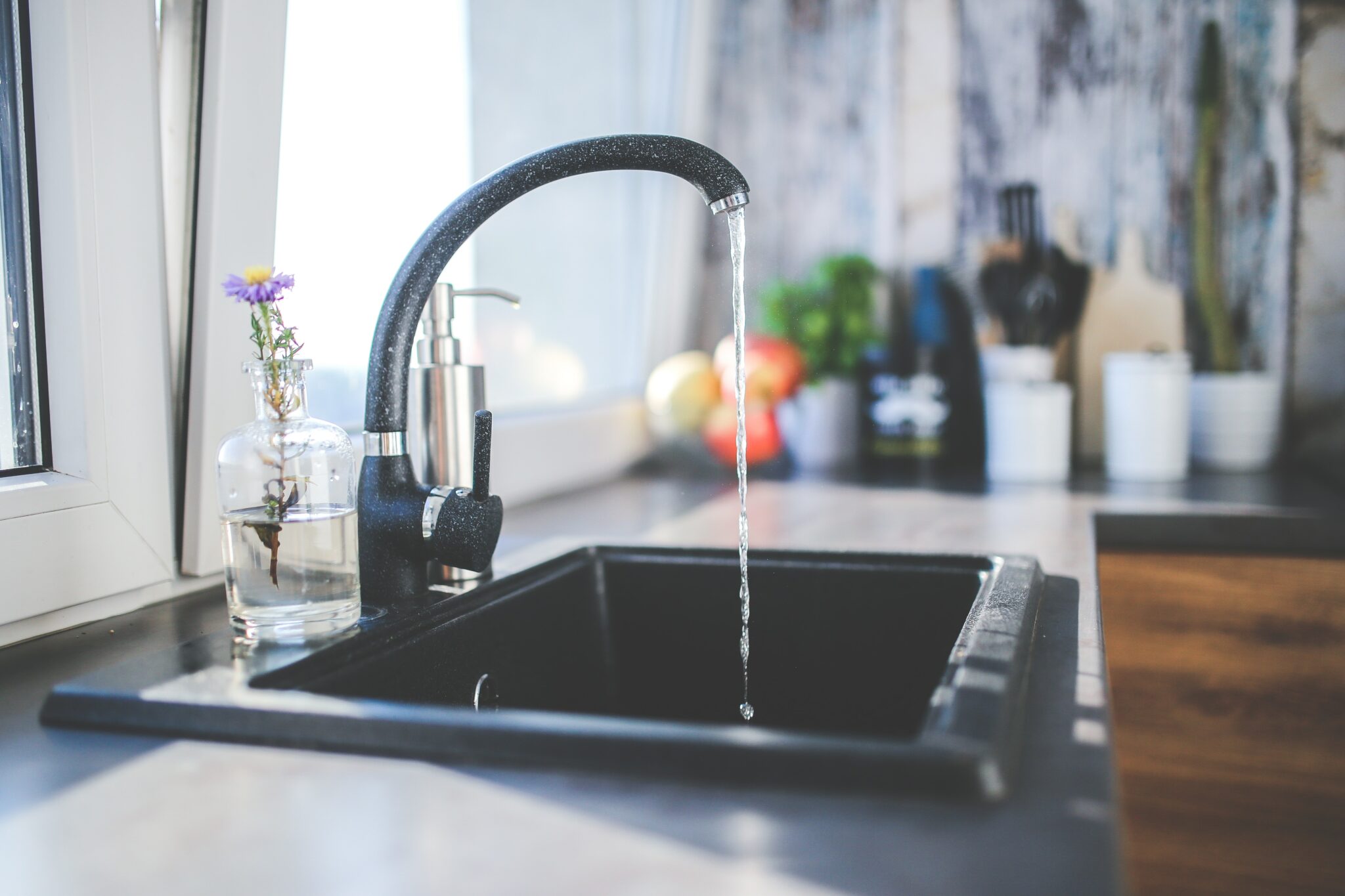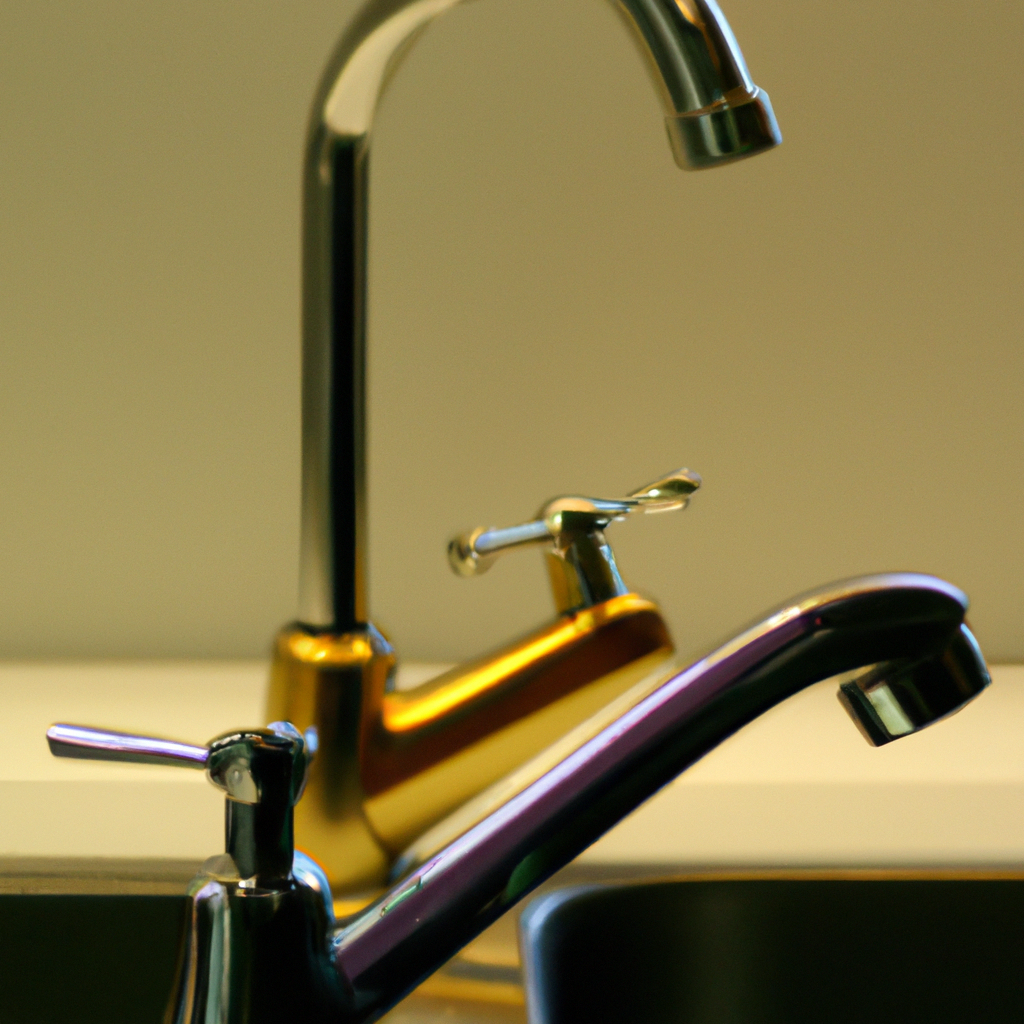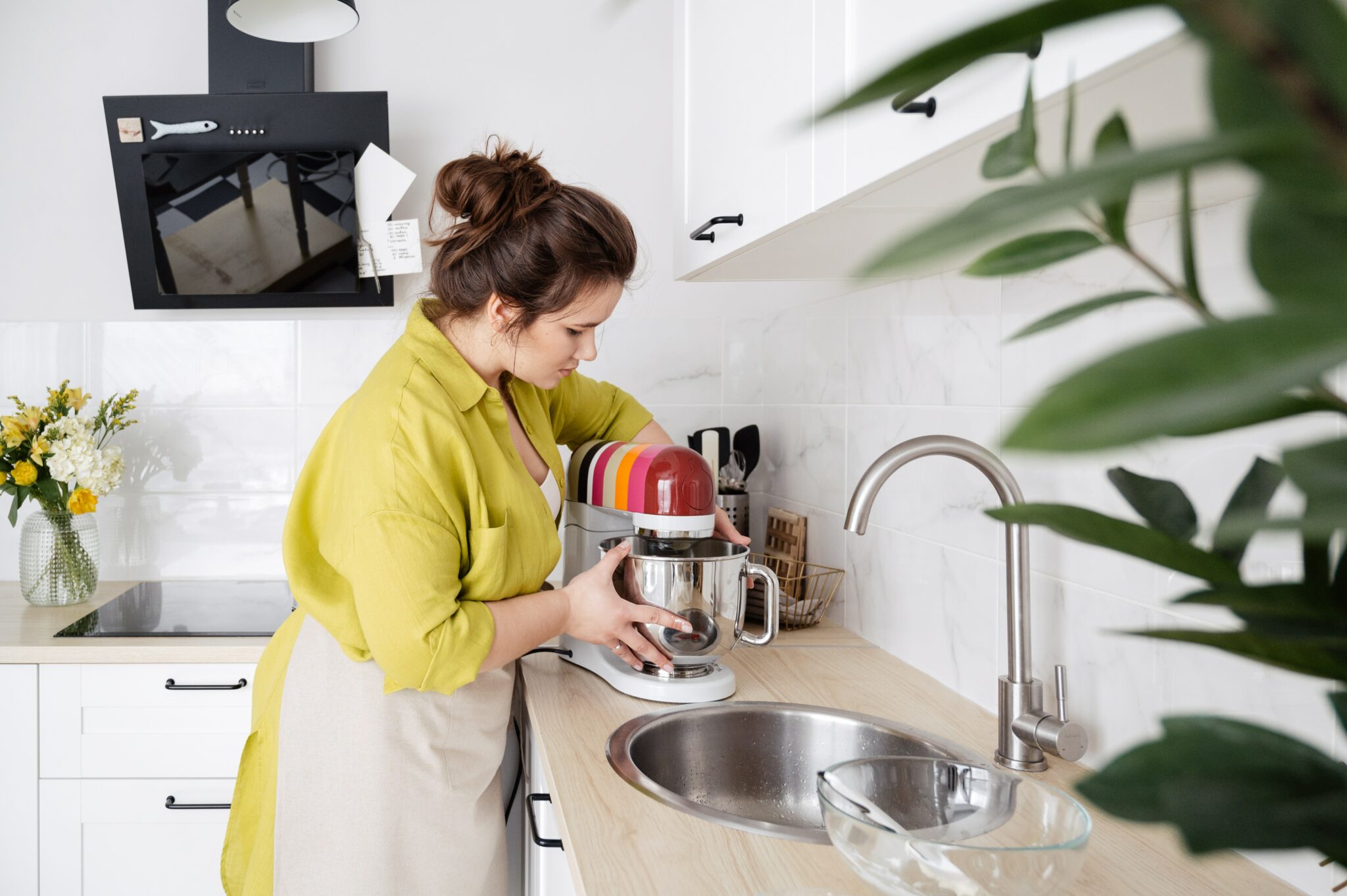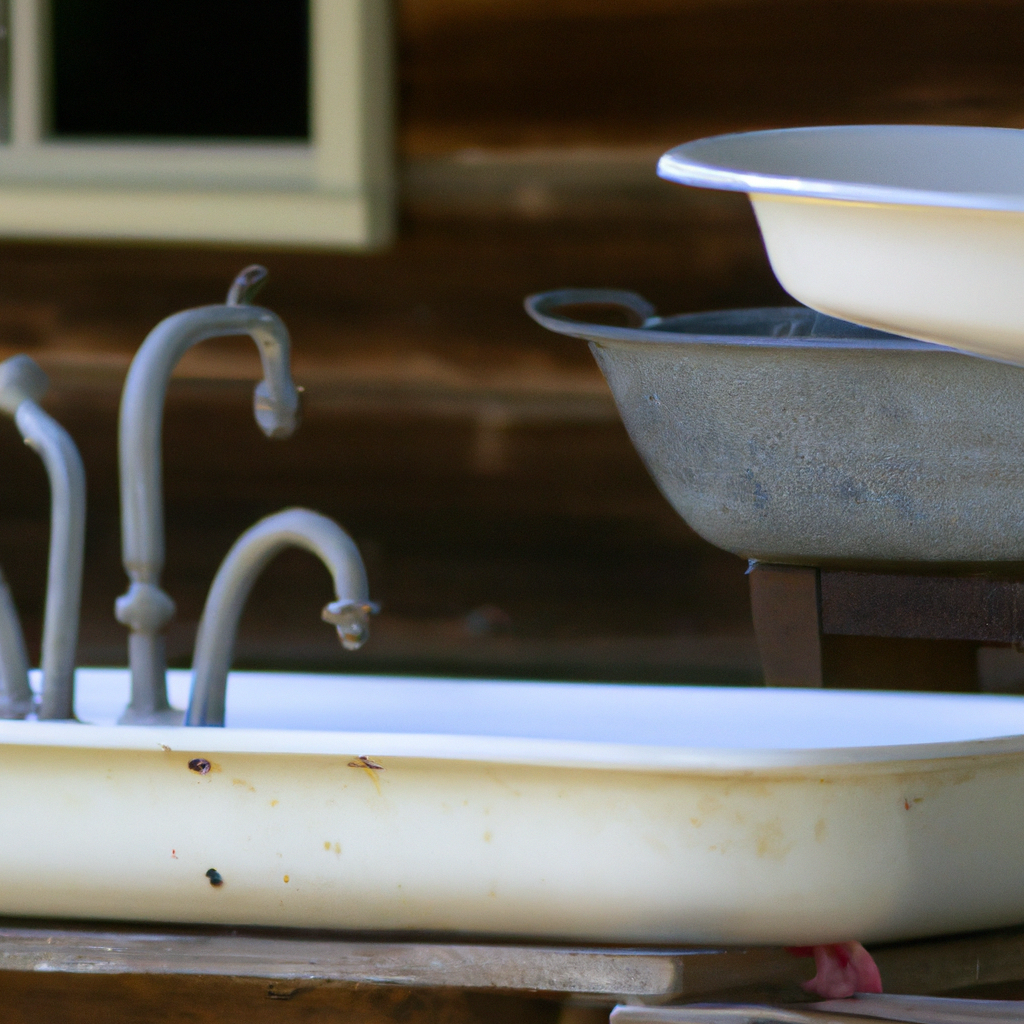Key Takeaway:
- Modern kitchen faucets offer more advanced features: Modern kitchen faucets often come with features like touchless technology, pull-down sprayers, and adjustable water flow, making them more functional and convenient for everyday use.
- Traditional kitchen faucets have a timeless appeal: Traditional kitchen faucets have a classic design that can add a touch of elegance to any kitchen. They also tend to be more durable and require less maintenance than modern options.
- When choosing between modern and traditional kitchen faucets, consider your specific needs: Think about how you use your kitchen faucet and what features are important to you. Consider the style of your kitchen and what type of faucet would complement it best.
Pondering which kitchen faucet to purchase? Modern or old-fashioned? This article will provide insight into their characteristics and advantages, enabling you to make a wiser choice. Uncover which style is more fitting for your daily requirements.
Overview of Modern and Traditional Kitchen Faucets
When it comes to choosing a kitchen faucet, the two primary options are modern and traditional designs. While both types of kitchen faucets serve the same basic function, they offer distinct features that cater to different tastes and needs. This section will provide an overview of modern and traditional kitchen faucets, diving into the unique characteristics of each.
First, we’ll explore the features of modern kitchen faucets, highlighting the qualities that make them stand out in today’s market. Then, we’ll take a look at the features of traditional kitchen faucets, examining the timeless aspects that keep them popular among homeowners.

Features of Modern Kitchen Faucets
Modern kitchen faucets come with a plethora of features. Like being water-efficient, with some having the WaterSense label and a flow rate of 1.5 gallons per minute. This helps in reducing water wastage and saving money on water bills. They also have aerators that allow ample water flow while reducing water pressure – thus saving water further. Plus, they come in different styles and finishes, so they’re suitable for different budgets.
Moreover, modern faucets have:
- pull-out/pull-down spouts
- spray head specs
- spot-resistant finishes – enhancing style and functionality.
And, they have a limited lifetime warranty offered by the manufacturer. So, if any defects or damages arise during use, the users are covered.
Before buying a kitchen faucet, it’s best to consult with licensed professionals or refer to independent ratings from organizations like the EPA. Whether you choose a modern or traditional faucet, consider its features, functionality, style, and price to ensure user satisfaction. Ensure the faucet is WaterSense labeled, lead-free, and meets the EPA’s criteria on water efficiency.
Features of Traditional Kitchen Faucets
Traditional kitchen faucets are popular with homeowners who love classic designs and decor. They come in many finishes, features, and prices. Plus, they are praised for their quality, style, and accessories, such as pull-out spouts or side sprayers. An efficient traditional kitchen faucet should have enough water flow to meet household needs, without wasting it or reducing pressure.
But, traditional kitchen faucets may not follow EPA criteria for water efficiency or be certified nationwide. To save energy and reduce water use, these faucets can be replaced with low-flow or aerating versions. This may even qualify for rebates or vouchers through public response or partnership agreements.
When choosing a traditional kitchen faucet, make sure it meets draft standards for accuracy, relevancy, and unbiased ratings. Based on data and expert advice. With the right faucet, you can get great flow and functionality without sacrificing style or wasting water.
Pros and Cons of Modern and Traditional Kitchen Faucets
Modern kitchen faucets come with sleek designs, high-performing fixtures, and good flow. They have various finish options, go through a certification process, and are eco-friendly. Accessories can make them more versatile, but cost more.
Traditional faucets have a retro look. They can help in retrofitting sinks, provide efficient water flow, and are often more affordable. But some designs may be inefficient when it comes to flow rate. When choosing between modern and traditional, consider your household’s needs and preferences. Consult experts like the editorial team or advisory board for help.

Comparison of the Functionality and Features of Modern and Traditional Kitchen Faucets
When looking at modern and traditional kitchen faucets, it is key to think about the features each type offers. Traditional faucets tend to be cheaper and have less features. But, modern faucets come with lots of added bonuses like high flow, draft specs, and extras.
Modern faucets boast techy functions like touchless control, temperature control, and low water pressure systems. Traditional faucets come with simpler components like single handles, basic designs, and two-handle options.
Kitchen faucets come in different looks like chrome, brushed nickel, or stainless steel to match your kitchen.
It depends on your needs, preference, and budget when picking between modern and traditional faucets. Consider your water needs and checkbook to make the best choice!


Factors to Consider When Choosing Between Modern and Traditional Kitchen Faucets
When picking a kitchen faucet, price points, water flow, demands on water heaters, household water needs, and specs must be taken into account. Modern faucets are known for their sleek look and features like touchless controls and integrated accessories. These are designed for modern kitchens, giving excellent performance and control. Traditional faucets come in a variety of styles, finishes and draft specs, fitting any kitchen space. They are usually cheaper than modern ones, so you can save money. In terms of performance, traditional ones offer good flow and are simpler to install.
Consider your family’s needs and kitchen style when deciding between modern and traditional kitchen faucets!
Installation and Maintenance of Kitchen Faucets
In this section of the article, we will discuss the crucial aspects of installation and maintenance of kitchen faucets. A poorly installed or maintained kitchen faucet could leak and create unforeseen mess and expenses. First, we will outline the steps involved in the installation of kitchen faucets to help you set up your faucet with ease. Then, we will offer tips for the proper maintenance of your kitchen faucet, including ways to avoid common issues that may arise and ways to ensure your faucet works flawlessly.
Steps for Installing Kitchen Faucets
Installing kitchen faucets is simple! Here’s how to do it:
- Turn off the water supply and open the faucet to release remaining water.
- Remove old faucet and mounting hardware, be careful not to damage your sink or countertop.
- Read the instructions, lay out all the parts.
- Install accessories such as soap dispensers and spray hoses as directed in the manual.
- Position the faucet in the mounting hole and align gaskets or washers as specified.
- Secure the faucet with the mounting hardware, making sure it’s snug but not overtightened.
- Connect the supply lines and use a wrench if needed to tighten the connections.
- Turn on the water supply slowly and check for leaks or drips.
Regular maintenance is vital to keep your faucet going, whether modern or traditional. Follow these steps and refer to product specs to make sure your installation is seamless and your faucet works efficiently for years!
Tips for Maintaining Kitchen Faucets
Maintaining kitchen faucets is a must for having them last long and perform well. Here are some tips to keep your kitchen faucet in good condition:
- Wipe it clean with a damp cloth or sponge to prevent the accumulation of dirt and grime.
- Replace gaskets, washers, and O-rings when they start leaking or become ineffective.
- Ensure sufficient water supply by removing any debris and sediment from the aerator.
- Get the latest industry and draft specifications to make an informed choice when buying a new kitchen sink faucet.
Choosing between modern and traditional kitchen faucets is a matter of personal taste and the style of your kitchen. Modern faucets often have more features such as touchless activation and water-saving technologies. Traditional faucets have graceful and timeless designs.
By following these tips and keeping up with the right specifications, you can make sure your kitchen faucet stays in great condition and provides clean, running water for many years.
Conclusion
Choosing between modern and traditional kitchen faucets comes down to functionality. Modern faucets have streamlined and fashionable designs, while traditional faucets are more timelessly elegant. Each offers unique advantages.
Modern faucets may offer pull-down or pull-out sprayers to make washing easier. Traditional faucets may provide more customization with different handle styles and finishes. Modern faucets are also often energy-efficient, with features like touchless technology. Traditional faucets can add a classic touch to any kitchen.
It’s all up to individual preference and needs. Modern faucets may be preferable for those seeking a sleek and low-maintenance design. Traditional faucets may be best for those who want a timeless style and more faucet accessories.
Five Facts About Modern vs. Traditional Kitchen Faucets: Which is More Functional?
- ✅ Modern kitchen faucets often come with touchless technology, making them more hygienic and convenient to use. (Source: The Spruce)
- ✅ Traditional kitchen faucets are typically more affordable than modern ones, but they may lack advanced features like sprayers and pull-out hoses. (Source: Bob Vila)
- ✅ The design of modern kitchen faucets often emphasizes sleek lines and minimalism, while traditional faucets may have more ornate detailing. (Source: Houzz)
- ✅ Some modern kitchen faucets offer features like water filtration and adjustable flow rates, which can make them more functional for specific needs. (Source: This Old House)
- ✅ Ultimately, the choice between a modern or traditional kitchen faucet comes down to personal style preferences and functional needs. (Source: Consumer Reports)
FAQs about Modern Vs. Traditional Kitchen Faucets: Which Is More Functional?
Q: What is the difference between modern and traditional kitchen faucets?
A: The difference between modern kitchen faucets typically have a sleek and contemporary design, while traditional faucets have a more classic and ornate appearance. Modern faucets often come with advanced features like touchless technology and ample flow, whereas traditional faucets may have more decorative handles and spouts.
Q: Which type of faucet is more functional for a kitchen sink?
A: The type of faucet that is most functional for a kitchen sinks, These only depends on personal preference and needs. Modern faucets often offer innovative features like touchless activation or pull-down sprayers that can enhance functionality, while traditional faucets may prioritize style and durability over added bells and whistles.
Q: What is ample flow in regards to kitchen sink faucets?
A: The Ample flow refers to the water pressure and volume that a faucet can provide. Some modern faucets are designed to provide a stronger and more consistent flow of water, which can be beneficial for tasks like washing dishes or filling large pots. However, some traditional faucets may also offer ample flow depending on their design.
Q: Is it more important to prioritize style or functionality when choosing a kitchen faucet?
A: When choosing a kitchen faucet, it is generally more important to prioritize functionality over style, as the faucet is an essential part of the kitchen and needs to be reliable and efficient in its function. However, there are many faucets available that offer both style and functionality, so it’s possible to find one that meets both needs.
Q: Can modern kitchen faucets save water compared to traditional faucets?
A: Yes, modern kitchen faucets can save water compared to traditional faucets through the use of various technologies such as aerators, flow restrictors, and sensor-based controls. These technologies help to reduce the amount of water used without compromising the performance or functionality of the faucet, resulting in improved water efficiency and conservation.
Q: How can I ensure that my kitchen faucet is the most functional for my needs?
A: To ensure that your kitchen faucet is the most functional for your needs, first check that you’ll be using your faucet most often (e.g., washing dishes, filling pots, etc.) and look for features that can enhance those tasks, such as a high-arc spout or a pull-down sprayer. It’s also important to consider factors like water flow and durability, as well as your personal style preferences.





